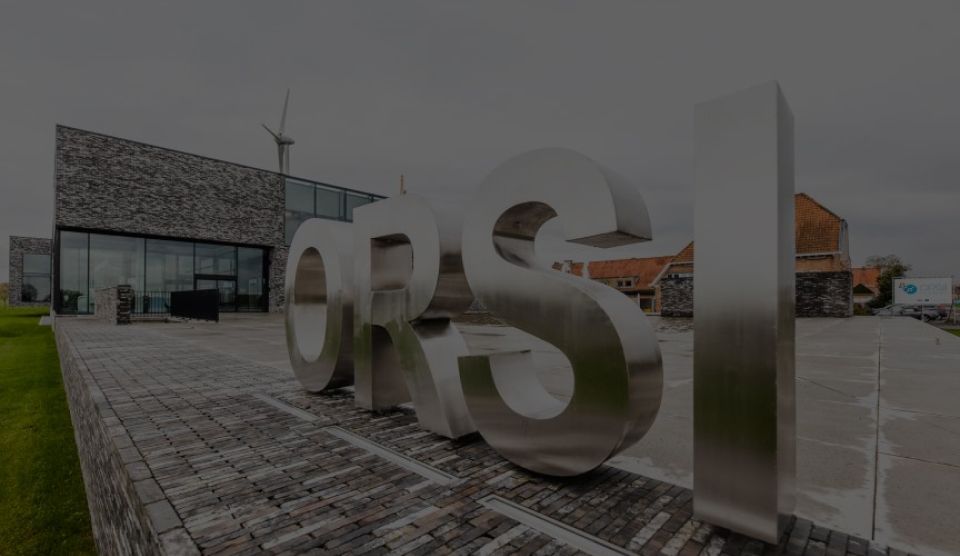Orsi Academy expands training centre for image-guided robotic surgery with technology from Siemens Healthineers
Investment partly financed by European Regional Development Fund

Orsi Academy, the state-of-the-art training & expertise centre for robotic and minimally invasive surgery in Melle, is further expanding its training facilities. With the support of the European Regional Development Fund, made available by VLAIO, it invested in medical imaging technology from Siemens Healthineers. This equipment allows Orsi Academy to further expand its offer and now facilitate training in other clinical disciplines such as cardiology, vascular surgery, interventional radiology and orthopaedics. With the investment, Orsi Academy confirms its undiminished commitment to continue contributing to improving and increasing the quality and safety of our modern healthcare system.



Since its establishment in 2010, Orsi Academy in Melle has grown into a globally renowned centre of expertise for robotic and minimally invasive surgery. As an open and inclusive ecosystem, it provides a platform for the safe & effective implementation of new technologies in medical practice and aims to further advance the quality & safety of modern healthcare. Orsi Academy facilitates on-site training for and by companies so that clinicians can optimally use robots during procedures. To further expand the training offering, it now invested in an all-new cluster of Siemens Healthineers, specializing in medical imaging.
More clinical disciplines
“Until recently, our focus was on robotic surgery, mainly training surgeons active in urology,” explains Professor Alexandre Mottrie of Orsi Academy. “This is still the case, but with the expansion of our training centre, we are now linking the potential of robotic surgery to the power of medical imaging, and opening the doors to other clinical specialties including interventional radiology, cardiology, vascular surgery and orthopaedics. In this way, we can support even more companies and healthcare professionals and further increase Orsi Academy’s impact and potential for quality of care."
The investment in the technology and equipment was partly financed by the European Regional Development Fund. “Through this project, Orsi Academy is pushing for integration of data-driven technologies,” attests Werner Van den Stockt, Management Authority of ERDF. “Orsi Academy thus responds to current and relevant developments within the innovation landscape. The ERDF programme focuses on innovative investment projects that create high economic and social added value. Developing innovative applications in a context of co-creation and open innovation is the starting point. Because of this focus, the ERDF programme takes up a clear position within Flemish innovation policy and plays an important bridging role in the step from research to economic valorisation. Developing innovative medtech applications is embedded in Orsi Academy's operations. Moreover, with the image-guided robotic surgery project, the training centre demonstrates the innovation-driven nature of its operation. The integration of data-driven technologies takes its operations to the next level. This further strengthens Orsi Academy's position as a world-class centre of expertise."


More precise medicine
Siemens Healthineers placed a catheterisation lab and vascular robot at Orsi Academy intended for minimally invasive procedures such as placing stents in the heart, as well as for various neuro applications. It also supplied several mobile C-arms, developed for 3D X-ray imaging, often used in orthopaedic procedures.
"This technology allows the doctor to see what is happening in the body during the procedure," says Dokus Mertens, Head of Sales & Portfolio Solution Management (BeLux) at Siemens Healthineers. "This not only allows him or her to work more precisely, the doctor can also immediately assess the success of the procedure. This makes a world of difference, both for the comfort of the patient and the hospital. On the one hand, the patient does not have to go under the scanner after the operation to check whether the procedure was successful, and under the knife again if this turns out not to be the case. On the other hand, the hospital can save costs on avoidable procedures or scans, and use its infrastructure optimally and efficiently for other patients."
"Combining robotic surgery with medical imaging opens the doors to more precise medicine in minimally invasive procedures. The robot improves the precision of the surgeon's hands, while imaging improves the eyes. By linking the robot to the imaging eyes, we will be able to perform procedures in a revolutionary way, not only more precise but also automated using artificial intelligence. The doctor will be assisted by an autopilot during the procedure with the aim of delivering the best care to the patient more safely, precisely and cost-efficiently. Siemens Healthineers is the only player in the market developing both robotic and medical imaging technology and is standing for state-of-the-art solutions," says Alexandre Mottrie of Orsi Academy.
Augmented reality
In addition, Siemens Healthineers is pushing to increase the impact of medical imaging in clinical practice. This translates into a new application to assist surgeons during procedures using augmented reality, which will also be used for training in Orsi Academy. "Previously, medical imaging involved viewing everything in cuts or sections of the body. Thanks to 3D imaging, a more photorealistic image can now be made of bone structure or the vascular system. Our Cinematic Anatomy allows those images to be projected onto the patient with augmented reality and glasses. The surgeon then sees the scanned volume and can manipulate this image to better understand the anatomy. The application is not yet widely used in practice but is accessible to surgeons in Orsi Academy. In this way, we help the training centre profile itself as a test hub for innovation and new technologies," concludes Dokus Mertens.









